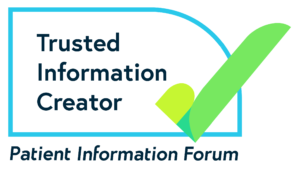Managing migraine at work
Tips on managing and coping with migraine at work, including workplace triggers for migraine.
The impact of migraine on work
Many people find that migraine has a negative impact on their ability to work. Migraine symptoms can include head pain, feeling or being sick, and sensitivity to lights or sounds. This can often make it impossible to work effectively. And if your migraine attacks are severe, you may feel like you’re unable to work at all.
Symptoms can continue for days, or even longer for some people. And this can mean long periods off work or where you’re not able to perform your job properly. Side effects from migraine medication such as drowsiness may affect your ability to work effectively too. If you have frequent or severe migraine attacks, you may find it difficult to work at all or to remain in your role.
Everyone’s experience of migraine is very different. Migraine symptoms and their impact on your work may also change over time.
The good news is that with a supportive employer and some adjustments where necessary, the majority of people with migraine are better able to manage their migraine in the workplace.
Nicola talks about her experience of migraine and work
Abbvie provided arm’s length full funding for this film and had no influence over its content.
Workplace triggers for migraine
Just as migraine can disrupt your work life, your work may have a negative effect on your migraine too. Whether you are working on a screen or on your feet all day, there may be factors about your workplace that make a migraine attack more likely. Common work-related triggers for migraine can include:
- lighting, noise and smells in the workplace
- stress
- screen use
- working long hours and lack of regular breaks
- changes in routine for shift workers.
If you don’t have support from managers or colleagues, you may also feel like it’s harder to cope when you do have a migraine attack during work time.
Tips for preventing migraine attacks at work
There are lots of things you can try that may help to reduce your risk of getting migraine attacks at work. And if you do have a migraine attack, some of these measures may help you to cope better.
Many of these are things you can do yourself. Others are things you may need support from your employer to put in place. If your migraine is classed as a disability, your employer has a legal duty to make ‘reasonable adjustments’ to support you.
There are things you can try to do in your everyday life, that may help to reduce your risk of migraine attacks in work.
- Review your medication regularly with your doctor and make sure you take it as advised.
- Use a migraine diary to keep track of possible triggers.
- Set a good sleep If you work night shifts, it may help to use blackout curtains, eye masks and earplugs to keep your sleep environment as quiet and dark as possible.
- Find ways to relax and reduce stress. Relaxation techniques like meditation, breathing exercises and yoga may also help with sleep.
- Maintain healthy habits – eat well with regular mealtimes, keep hydrated and staying active.
Think about what changes in your workplace may help. Some may be changes you can make yourself, others may need support from your employer.
- Make sure you are not situated near flickering lights, or that any lighting issues are fixed quickly.
- Position yourself near natural light, using blinds as necessary to reduce window glare. Desk lamps can often be better than overhead lighting.
- If you use a computer, use anti-glare screens and blue light filters, and make sure you have regular breaks from the screen.
- If you are desk-based, set up your workstation to make it as ‘migraine-friendly’ and comfortable as possible. This includes making sure your desk, screen and chair are at the right height to allow good posture and prevent neck or back pain.
- Wear tinted glasses or safety glasses if you work outside or are affected by lighting in your workplace.
- Keep your workplace well-ventilated and a comfortable temperature.
- Use earplugs or ear defenders if noise is an issue.
- Make time for regular breaks so you can move around and keep to mealtimes.
- Keep hydrated – especially if you have a physical job.
- Keep to a regular routine if you work from home.
These are things to discuss with your employer or manager.
- Make sure you have clear objectives, adequate support and achievable workload to prevent stress.
- Consider flexible or remote working, or changes in working hours. This may help with time management, stress or workplace triggers.
- Rotate tasks or have regular breaks from tasks that may trigger migraine attacks.
- Limit online meetings, ask to turn your camera off, or consider alternative ways to connect if video calls are an issue for you.
- Avoid unnecessary meetings and travel that may disrupt your usual routine.
- Avoid unplanned overtime or shift work.
- Agree time off for medical appointments.
“Cleaning products used in the office used to trigger really bad migraine attacks – I used to be physically sick at work. I requested to work two days a week from home so I’m taken away from those smells and that helped massively.”
Coping with a migraine attack at work
You can’t always avoid a migraine attack happening at work. Migraine attacks affect everyone differently. Some people may feel able to carry on working after having a rest and taking medication. Others may be OK if they’re able to switch tasks. But for some people, symptoms may be so debilitating that it’s impossible to work.
It can be helpful to plan in advance for if you have a migraine attack at work.
Some things to think about may include:
- what tasks you can or can’t manage during a migraine attack
- if there is somewhere quiet you can rest and take your medication when symptoms start
- if there is someone who can provide immediate cover if necessary (depending on your job requirements)
- how quickly you may need to go home when a migraine attack starts, and how you would get home safely
- what the risks are if you are in a job role that involves operating machinery, driving, caring for people or being responsible for children.
Talk through these points with your manager. You can use our Managing your migraine at work checklist to put some plans in place.
You could also think about putting together an ‘emergency migraine kit’ to keep with you at work. This can include all the things that you find useful during a migraine attack. This might include:
- acute or ‘rescue’ migraine medications
- a snack
- a drink
- cool or heat packs
- dark glasses
- ear plugs.
Taking time off work for migraine
Whether you need to take time off for migraine will be very individual to you. It will depend on the type of symptoms you have and how severe they are, as well as the type of work you do. However, you should never feel pressured to carry on working if you are struggling with head pain or other symptoms. It can delay you feeling better.
If your migraine is classed as a disability, your employer may be able to make some reasonable adjustments in relation to sickness absence. These could include:
- discounting some sickness absence relating to your migraine
- extending the limit for when absences might trigger a review.
You may be entitled to sick pay if you take time off sick because of your migraine. This may be statutory sick pay (SSP) or a higher amount, as specified in your company’s own policy. You can read more about sick pay in our toolkit.
Make sure you are familiar with your company’s procedures on sickness absence and sick pay. Speak to your manager or Human Resources (HR) department or representative if you’re unsure.
If you are self-employed, there may be other benefits you can claim if you can’t work due to your migraine.
Our workplace resources
We have a range of resources to help support you in the workplace. You can download these below.
Managing migraine at work toolkit Our toolkit has information on your legal rights, as well as practical tips for managing migraine at work.
Download toolkitWorkplace factsheet You can share our migraine information for workplaces factsheet with your manager or colleagues.
Download factsheetWorkplace checklist You can use our checklist to aid discussions with your manager or employer about your migraine.
Download checklist (PDF) Download checklist (Word)Migraine toolkit for employers and managers Employers and managers can access our toolkit aimed at supporting people in the workplace with migraine.
Access toolkitAbout our information
 This information has been written by The Migraine Trust Information and Support Services team. It has been reviewed by our panel of expert health professionals and people affected by migraine.
This information has been written by The Migraine Trust Information and Support Services team. It has been reviewed by our panel of expert health professionals and people affected by migraine.
Our information has been awarded the PIF TICK quality mark for trustworthy health information.
If you have feedback on our information, please get in touch at: feedback@migrainetrust.org
References for our information are available on request.
Last reviewed: May 2025 | Next review due: May 2028


